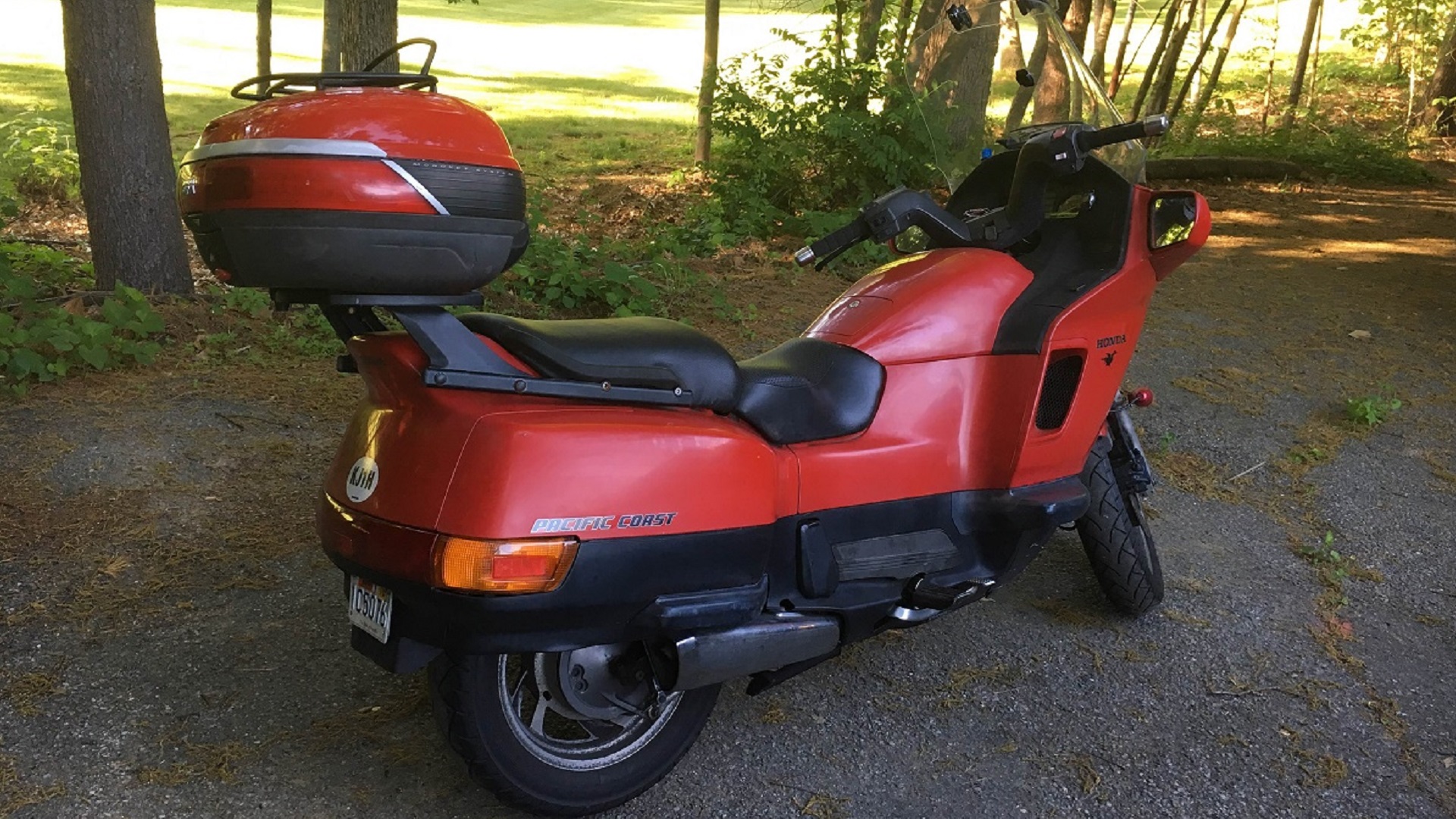

Honda is unique amongst vehicle manufacturers in that it makes both cars and motorcycles. (So does Suzuki, but they don’t sell their cars in the U.S. anymore, so we don’t count ’em.) In the late 1980s, Honda asked their car and motorcycle designers to put their heads together and create a motorcycle for people who don’t ride motorcycles. It would be a bike that would provide the small size and excellent gas mileage of a bike, but covered in a friendly wrapper for people who didn’t want any part of the bad boy biker scene. The result was the Pacific Coast 800, a plastic-wrapped motorcycle that was ahead of its time in many ways, but failed to attract the popularity Honda had hoped to gain.
Motorcycles covered in plastic are fairly common today, but in 1989 they were largely unheard of. As a result, the PC800 was quite futuristic looking at the time. (In fact, it looked so advanced that it was used as a future bike in Back to the Future 2 and Harley Davidson and the Marlboro Man.) The idea was to keep the appearance clean and to hide the engine, unlike other motorcycles of the time. As a bonus, Honda was able to save some money on making the engine pretty, since the typical owner would never see it.
Honda borrowed the V-twin from the VT800 Shadow for the PC800—but to make it appeal to non-riders, four rubber motor mounts isolated any vibration, and the exhaust was made to sound more like a sewing machine than a motorcycle. Honda also made it extremely low-maintenance, with a self-adjusting timing chain, hydraulic lifters that did not have to be adjusted from time to time like most motorcycles. It was no powerhouse with just 46 horsepower, but the extremely flat torque curve ensured that the 600-pound bike always had some get-up-and-go. And a shaft drive eliminated the need for chain or belt adjustments.

The gauge cluster looked more like the dashboard from a Civic of the time. Fuel and temperature gauges are unusual on motorcycles, yet the PC800 had both. Early models featured a stereo system and self-canceling turn signals, but these were eliminated to reduce costs as the model run went on.

The most unique feature of the PC800 was its trunk. Rather than traditional saddlebags, the entire top rear of the bike opened, just like a car. Inside were two cavernous storage compartments, separated by the rear wheel hidden in between them. The plastic “gas tank” was merely a cover over the top of the engine, with the actual tank mounted down low like a Goldwing. A locking cover revealed not only the gas cap but a trunk release lever, very much like that of a car. (It’s also a safe place to stash an EZ-Pass so you don’t skip the tolls.)

I owned a 1998 model and took many tours on it, including one all the way out to Cape Breton Island, Nova Scotia, to ride the Cabot Trail. A previous owner had added a Givi top trunk to the already generous storage area, and though it was much smaller than a Goldwing or an ST1300, I had no problem living off the bike for a week.
The market, however, did not agree with my personal enthusiasm for the PC800. After a strong start in 1989, sales plummeted, leading Honda to remove the PC800 from the American market after 1990. It returned for 1994, but sold barely 1,000 copies a year. My 1998 was one of only about 500 made that year. As innovative as the PC800 was, it was still a motorcycle built for people who don’t ride motorcycles, which seems to be a losing proposition. But many of these bikes are still running today. Check out the PC800 Buy/Sell Registry to find one of your own.